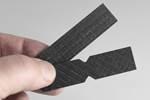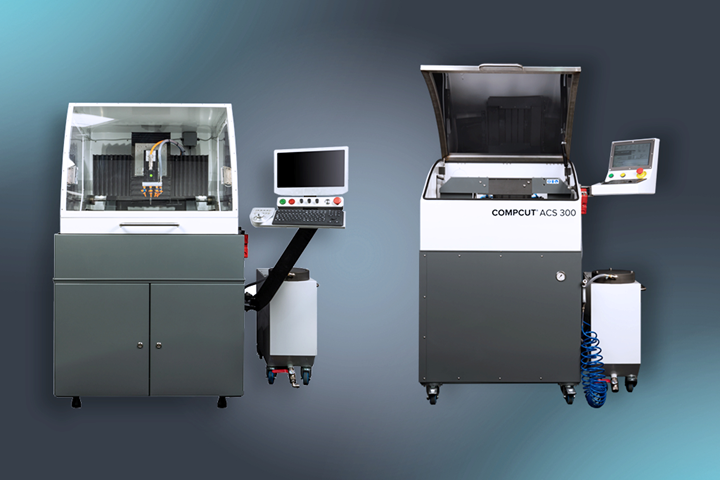Compcut features ACS, PCR composite cutting technologies
Advanced plate saw and precision router provide precise, fast and efficient cutting of composite test specimens.
Compcut, a specialist division designing and manufacturing state-of-the-art composite cutting and machining solutions, powered Sharp & Tappin (Holsworthy, U.K.), presents two flagship machines from its next-generation composites cutting fleet, the advanced composite saw (ACS) and precision composite router (PCR), for precise, fast and efficient cutting of composite test specimens.
The PCR 300 is well-suited for cutting complex geometries from a range of composite materials, including carbon fiber-reinforced plastic (CFRP), thermoplastics and aramid fibers. Featuring a “hybrid” machining solution, it combines routing and CNC milling, capable of cutting high-precision “dog bone” and “open hole” compression test samples. It is available as a “complete solution package” with a comprehensive range of cutting tools and a suite of machining programs.
Compcut’s ACS 300 demonstrates highly consistent and accurate parallelism and perpendicularity (down to 0.03 mm) when cutting test specimens (read “Compcut ACS 300 machine provides safety, high performance for U.K. students”). The composite plate saw, with a clear panel size of 300 × 300 mm, is ideal for smaller laminate sizes and test specimens. The finish of cut samples from the ACS 300 requires no post-processing.
Related Content
-
Innoptus Solar Team uses Jetcam software to optimize production of solar vehicle
The world title-holding, Belgium racing team is producing its tenth composites-intensive solar car using Jetcam Expert nesting software.
-
Zünd, Loop Technology partner on FibreLine preforming system
Pairing Loop Technology’s automation with Zünd digital cutters provides faster cutting, less stray fibers, higher ply accuracy and more precise preforms for composite aerostructure manufacturing.
-
Plant tour: Joby Aviation, Marina, Calif., U.S.
As the advanced air mobility market begins to take shape, market leader Joby Aviation works to industrialize composites manufacturing for its first-generation, composites-intensive, all-electric air taxi.













